Against the backdrop of the imminent enactment of the Foreign Educational Institutions (Regulation of Entry and Operations) Bill, 2010, Dilip Thakore investigates the causative factors behind the transformation of the island Republic of Singapore into an Asian hub of world-class education
 In its first avatar, the Foreign Educational Institutions (Regulation of Entry and Operations) Bill, 2010, which is almost certain to be passed in the monsoon session of Parliament beginning July 26, was drafted four years ago. The Bill is the outcome of the publication of alarming reports of the Delhi-based National Knowledge Commission (NKC) indicating that the world’s second fastest growing economy has a tertiary education GER (gross enrolment ratio) of only 9 percent — i.e only 9 percent of India’s youth in the age group 18-24 are enroled in institutions of higher education against over 60 percent in the US, 40 percent in the UK and 20 percent in China. In NKC’s Report to the Nation 2006-09, Chicago/Delhi-based telecom switching systems multimillionaire Satyen (‘Sam’) Pitroda, who until recently was chairman of the commission, warned that the Indian economy growing at a fast clip of 8 percent plus per year needs to increase the number of its universities and undergraduate colleges from 431 and 23,000 currently to 1,500 and 45,000 respectively by the year 2015.
In its first avatar, the Foreign Educational Institutions (Regulation of Entry and Operations) Bill, 2010, which is almost certain to be passed in the monsoon session of Parliament beginning July 26, was drafted four years ago. The Bill is the outcome of the publication of alarming reports of the Delhi-based National Knowledge Commission (NKC) indicating that the world’s second fastest growing economy has a tertiary education GER (gross enrolment ratio) of only 9 percent — i.e only 9 percent of India’s youth in the age group 18-24 are enroled in institutions of higher education against over 60 percent in the US, 40 percent in the UK and 20 percent in China. In NKC’s Report to the Nation 2006-09, Chicago/Delhi-based telecom switching systems multimillionaire Satyen (‘Sam’) Pitroda, who until recently was chairman of the commission, warned that the Indian economy growing at a fast clip of 8 percent plus per year needs to increase the number of its universities and undergraduate colleges from 431 and 23,000 currently to 1,500 and 45,000 respectively by the year 2015.
Although legislation to facilitate the entry of foreign universities and higher institutions into India to rapidly expand capacity and upgrade academic standards was expeditiously drafted to initiate a national debate, the proposal was anathema to the country’s then powerful communist parties — the CPI and CPM — which with 66 seats in the Lok Sabha were propping up the Congress-led first United Progressive Alliance (UPA-I) government in Parliament. But despite the title of a draft Bill being expanded to include the words ‘prevention of commercialisation of education’, the communist parties stalled its passage during the tenure of the UPA-I government (2004-09). Moreover it’s hardly a secret that the then Union human resource develop-ment (HRD) minister Arjun Singh — a diehard socialist — was lukewarm about rolling out the red carpet for foreign education institutions.
However following the rout of the communist parties in the general election of May 2009, the exit of Arjun Singh from the HRD ministry and his replacement with Kapil Sibal — the liberal and arguably most active minister of the Congress-led UPA-II government in New Delhi — the FEI Bill with an abbreviated title has received a new lease of life. Sibal is reportedly hell-bent on piloting it through the monsoon session of Parliament.
Yet within Shastri Bhavan, Delhi which is the nerve centre of the Union HRD ministry, there is a somewhat naïve belief that given the size of India’s 18-24 youth population (112 million), foreign universities and tertiary education institutions are lined up, waiting to stampede into Indian academia. This perhaps explains the stiff terms and conditions of entry imposed upon foreign institutions choosing to “impart higher education (including technical education and medical education and award of degree, diploma and equivalent qualifications by such institutions) and for matters connected therewith or incidental thereto” in India, as per the state of objects and reasons of the FEI Bill.
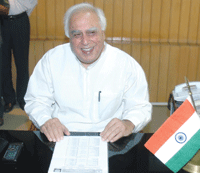 A quick perusal of the draft Bill which was passed by the Union cabinet on March 22 and has since been tabled in the Lok Sabha for debate and enactment, makes it plain that the overriding concern of the drafters of the Bill is fear of second-rung foreign education providers rushing into the country and bamboozling Indian youth with sub-standard education and sky-high tuition fees. Therefore an elaborate process and procedure has been mandated (s.4) which requires foreign educational institutions with a minimum vintage of 20 years to register with the University Grants Commission, maintain a corpus of “not less than” Rs.50 crore ($10.86 million), and reinvest all surpluses in development of the institution established in India, i.e not repatriate any dividends.
A quick perusal of the draft Bill which was passed by the Union cabinet on March 22 and has since been tabled in the Lok Sabha for debate and enactment, makes it plain that the overriding concern of the drafters of the Bill is fear of second-rung foreign education providers rushing into the country and bamboozling Indian youth with sub-standard education and sky-high tuition fees. Therefore an elaborate process and procedure has been mandated (s.4) which requires foreign educational institutions with a minimum vintage of 20 years to register with the University Grants Commission, maintain a corpus of “not less than” Rs.50 crore ($10.86 million), and reinvest all surpluses in development of the institution established in India, i.e not repatriate any dividends.
Moreover while s. 6 of the FEI Bill obliges registered foreign education providers to notify “each of components of the fee, deposits and other charges payable” by students, it’s not clear whether they will be subject to regulatory supervision by admission and fees adjudication committees established in the states as per the Supreme Court’s judge-ment in the Islamic Academy Case (2003). Nor is it clear whether the foreign education institutions will be obliged to adhere to the conces-sional affirmative action quotas mandated by the Central and state governments in favour of scheduled castes, scheduled tribes and other backward caste (OBC) students.
The elaborate set of controls (including approval of syllabuses and curriculum by UGC) prescribed for foreign educational institutions establishing campuses or academic outposts in India — at a time when the best universities in the US and Britain have suffered severe endowment meltdowns and/or sharp grant cuts during the current global economic downturn — has generated widespread skepticism about front-ranking univer-sities which top the league tables of THE, London or the Shanghai Jiao Tong University (China) establishing capital-intensive branch campuses in India in the near future. Despite brave noises from within the HRD ministry, none of the American Ivy league or top-rung British universities have shown any interest in gaining the early mover’s advantage by establishing a branch campus in this country, or indeed of signing any major joint venture agreement of meaningful proportions. Quite obviously the infamy of contem-porary India’s venal and interfering bureaucracy has spread far and wide.
However Anand Sudarshan, the knowledgeable chief executive of the transnational Manipal Education Group which is a Bangalore/Manipal-based foreign education provider in its own right, and has established medical and/or engineering colleges in Malaysia, Nepal, Dubai and Antigua (West Indies), is inclined to believe that the FEI Bill is a positive initiative. “Quite evidently the Union government is trying to strike a balance between the need to attract proven, high-quality universities and the apprehensions it — rightly — entertains about inadvertently opening the door to dubious ones. The Bill is also mindful of the alternate viewpoints that exist on this politically sensitive issue. There can be many views about where to strike a balance, of course. But I think it’s more important that a start has been made to invite foreign higher education institu-tions to become involved with Indian academia. If the HRD ministry and government keep an open mind, learn quickly from the initial experience and tweak the provisions of the Bill appropriately, several respectable universities will look at India seriously. But the jury is out for a while on how many of them will actually invest in India, and to what extent. Nevertheless overall, the Bill is a welcome initiative,” says Sudarshan.
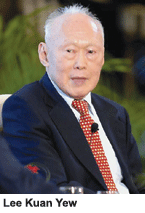 Yet even as cautious and highly conditional legislation permitting — rather than welcoming — foreign universities and institutions of higher education to establish their foothold in Indian academia is about to be approved by Parliament, several South-east Asian countries, particularly the Republic of Singapore (pop.4.7 million), have successfully attracted the best foreign higher education institutions — espe-cially reputed business management schools — to establish campuses in the island republic which has transformed into an Asian hub of world-class education. Against the backdrop of this tiny city state having metamorphosed into one of the world’s most successful economies boasting a smartly-governed, well-housed, well-fed and well-educated population and drawing students from world over into its excellent institutions of higher education, your corres-pondent journeyed to Singapore to investigate this phenomenon.
Yet even as cautious and highly conditional legislation permitting — rather than welcoming — foreign universities and institutions of higher education to establish their foothold in Indian academia is about to be approved by Parliament, several South-east Asian countries, particularly the Republic of Singapore (pop.4.7 million), have successfully attracted the best foreign higher education institutions — espe-cially reputed business management schools — to establish campuses in the island republic which has transformed into an Asian hub of world-class education. Against the backdrop of this tiny city state having metamorphosed into one of the world’s most successful economies boasting a smartly-governed, well-housed, well-fed and well-educated population and drawing students from world over into its excellent institutions of higher education, your corres-pondent journeyed to Singapore to investigate this phenomenon.
Inside the Republic of Singapore it would be difficult to find any individual who doesn’t ascribe the astonishing growth and development of this city state, which attained its independence from British rule in 1965, to the firm guiding hand of Lee Kuan Yew, the Cambridge and Middle Temple (UK) alumnus whose People’s Action Party (PAP) was voted to power immediately after Singapore became free 45 years ago. Transforming Singapore into an “Asian Way” democracy dominated by one political party (PAP), Lee served as prime minister and chief executive of the island republic for 25 years until 1990 when he was succeeded by his cabinet colleague and senior PAP member Goh Chok Tong. However, he remains a member of the cabinet even after his Cambridge and Harvard-educated son Lee Hsien Loong was appointed prime minister by PAP in 2004.
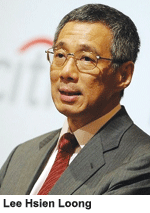 Together this triumvirate of former prime ministers — Goh is also a senior minister in Lee Hsien’s cabinet — governs the wonder economy that is contemporary Singapore. Yet in the popular imagination and to universal acclaim, Lee Kuan Yew is the widely acknowledged conceptualiser and architect of born-again Singapore which he has miraculously transformed into a global financial and education hub, as also into arguably the world’s cleanest and greenest 21st century metropolis with a mind-bending per capita income of $49,700 (Rs.22.86 lakh) adjusted for purchasing power parity.
Together this triumvirate of former prime ministers — Goh is also a senior minister in Lee Hsien’s cabinet — governs the wonder economy that is contemporary Singapore. Yet in the popular imagination and to universal acclaim, Lee Kuan Yew is the widely acknowledged conceptualiser and architect of born-again Singapore which he has miraculously transformed into a global financial and education hub, as also into arguably the world’s cleanest and greenest 21st century metropolis with a mind-bending per capita income of $49,700 (Rs.22.86 lakh) adjusted for purchasing power parity.
Although liberal democracy purists tend to be critical of the dominance of PAP in the island nation’s politics which has reduced the opposition to a solitary member of Parliament, discerning that in developing countries the mass of people are perfectly willing to accept Asian Way limited democracy as a trade-off with firm law, order and justice systems and economic growth, Lee and the PAP have ensured that the average annual rate of GDP growth of the economy has averaged 9 percent for the past 45 years. This has resolved Singapore’s wide-spread housing, food, education and health shortages of yesteryear in perhaps the most astonishing national socio-economic development story of the 20th century.
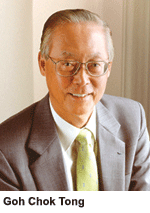 The miraculous transformation of Singapore from a typically chaotic seaport with tiny enclaves of colonial affluence into a first-world city state distinguished by green cover, flowering boulevards, superb public transport systems and excellent public housing, is testified by Dr. Lalit Kanodia, the IIT-Bombay and MIT, Boston-educated promoter chairman of the Mumbai-based Datamatics Group of companies (aggregate revenue: Rs.510 crore; headcount: 3,100 in 2008-09).
The miraculous transformation of Singapore from a typically chaotic seaport with tiny enclaves of colonial affluence into a first-world city state distinguished by green cover, flowering boulevards, superb public transport systems and excellent public housing, is testified by Dr. Lalit Kanodia, the IIT-Bombay and MIT, Boston-educated promoter chairman of the Mumbai-based Datamatics Group of companies (aggregate revenue: Rs.510 crore; headcount: 3,100 in 2008-09).
“When I visited Singapore for the first time in 1965, it was in worse condition than a typical second tier city in India with pot-holed roads, slum colonies, dilapidated shops and washing hanging out of windows. Since then I having been visiting the city at regular intervals, and have personally witnessed its incredible transformation into the world’s cleanest metropolis and a globally-respected business and financial hub. And there’s no doubt the driver and architect of this miraculous transformation of Singapore is Dr. Lee Kuan Yew. Although I am not sure that development of excellent education institutions is the cause or consequence of the metamorphosis of Singapore, I am positive it is a major contributory factor,” says Kanodia.
In his remarkably candid memoire From Third World to First — The Singapore Story 1965-2000 (Harper Collins, 2000), in which he recounts his version of the quick passage of Sing-apore from developing to developed nation status, in a chapter titled ‘Nurturing and attracting talent’ Lee narrates how the first PAP government of independent Singapore built upon “the good fortune that under the British, Singapore had been (developed) as a regional centre for education”. Through a series of moving-the-goal-posts initiatives, including encouraging highly educated male citizens to marry with their intellectual equals, and inviting the migration of educated and talented expatriate entrepreneurs and professionals into Singapore, Lee’s government rapidly developed the human capital which has scripted the island republic’s extraordinary success story. “It has taken me some time to see the obvious, that talent is a country’s most precious asset. For a small resource-poor country like Singapore, with 2 million people at independence in 1965, it is the defining factor,” he writes in his engaging memoire.
For the purpose of encouraging the inflow of investment, entrepreneurs and skilled professionals — and of education institutions — into post-independence Singapore, the Lee government reactivated and re-energised the island’s Economic Development Board (EDB), established by the colonial government in 1961. In the initial years after independence EDB’s main task which it discharged with exemplary efficiency — the Lee government was pronouncedly free enterprise-oriented and had few of the pro-Soviet ideological hang-ups which crippled economic development in post-independence India — was to deliver trained technical manpower to the large number of foreign companies attracted to Singapore with its low corporate and personal income tax regime. Back in the early 1970s in collaboration with corporates including the Tata Group (India), Rollei (Germany) and Philips (Holland), EDB established vocational schools christened Joint Government Training Centers to expand the pool of skilled technical manpower.
However with the demand for globally comparable education instit-utions — particularly from expatriate communities — becoming more insistent, in the 1990s EDB became more directly involved with the island republic’s education infrastructure development drive. In 1997 in collaboration with the education ministry, the board launched its World Class Universities programme and the Global Schoolhouse Initiative in 2002 “to develop Singapore as a world-class education hub offering a diverse and distinctive mix of local and international quality services”. Moreover following several less than bona fide foreign education institutions duping local students with substandard curriculums and certification, last year EDB promoted the Council for Private Education whose board comprises a mix of officials of EDB, ministry of education and eminent educationists, as a licensing authority for foreign education providers. Consequently CPE’s ‘Edu-trust’ stamp of approval is mandatory for all foreign education providers in Singapore.
Quite obviously the island republic’s strategy under which EDB identifies, invites and facilitates the entry of blue-chip universities and higher education institutions has paid off. Currently Singapore boasts 16 globally-respected universities and B-schools including INSEAD, Digipen Institute of Technology, Duke University, German Institute of Science and Technology, Waseda University and Shanghai Jiao Tong among others who have established campuses in the country. Their presence has drawn over 90,000 foreign students from Asia and around the world to the city state.
“Singapore is continuously broad-ening and deepening its educational offerings to become a world-class education destination that is global both in institutional composition and student mix. An increasing diversity of schools and programmes will give students a wider selection of quality education options ranging from business, wealth management and digital animation to fashion and culinary arts, luxury brand management and hospitality. Singapore’s efforts to develop the Global Schoolhouse initiative have also strengthened its reputation as a talent hub in attracting and retaining people,” says Toh Wee Khiang, executive director (human capital), EDB (see interview).
More pertinently, claims made by EDB and the few government officials willing to grant media interviews (ministry of education officials cancelled an appoint-ment at the last minute) of having developed a regulatory framework which makes it smooth sailing for proven foreign education providers to set up shop in Singapore, are backed by academics of pioneer higher education institutions which have established branch campuses in the prosperous island republic.
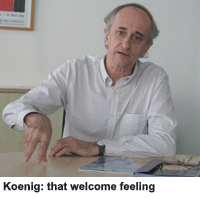 A case in point is Christian Koenig, director of the Asian Centre of the Cergy-Pontoise (France)-based B-school ESSEC (estb.1907), which established a branch campus in Singapore in 2005 and currently has 130 students enroled in its intensive 12-month Masters in management programme. “We are one of IIM-Ahmedabad’s oldest partners since 1984, and contri-buted the first foreign students to IIM-A. But when we applied in 2003 to establish a branch campus in India, permission was not granted. Instead we did so in Singapore, from where we are applying our unique expertise to equip European and Asian students to manage the distinctive business development challenges of the ASEAN region. The entry process into Singa-pore was smooth and we were made to feel welcome. Significantly, there is very little government interference with our operations — no deposits are required, there are no affirmative action quotas and we are free to determine our tuition fees,” says Koenig.
A case in point is Christian Koenig, director of the Asian Centre of the Cergy-Pontoise (France)-based B-school ESSEC (estb.1907), which established a branch campus in Singapore in 2005 and currently has 130 students enroled in its intensive 12-month Masters in management programme. “We are one of IIM-Ahmedabad’s oldest partners since 1984, and contri-buted the first foreign students to IIM-A. But when we applied in 2003 to establish a branch campus in India, permission was not granted. Instead we did so in Singapore, from where we are applying our unique expertise to equip European and Asian students to manage the distinctive business development challenges of the ASEAN region. The entry process into Singa-pore was smooth and we were made to feel welcome. Significantly, there is very little government interference with our operations — no deposits are required, there are no affirmative action quotas and we are free to determine our tuition fees,” says Koenig.
Yet another B-school which had the red carpet rolled out for it to establish an affiliated campus in Singapore is India’s own Bharatiya Vidya Bhavan-promoted Mumbai-based S.P. Jain Institute of Management and Research (SPJIMR), which has splendidly reconstructed and refurbished a seven-acre property of the former Nizam of Hyderabad. Since SPJIMR took charge of the Nizam’s property in 2005, it has been transformed into a model campus of manicured gardens, gleaming white restored buildings, hi-tech lecture halls and impressive reception and dining rooms — restoration efforts which have prompted the Singapore government to accord the S.P. Jain campus a national heritage status.
Currently the S.P. Jain Center of Management (SPJCM), Singapore houses 400 graduate students admitted in two batches (April and November) into its 12-month wholly residential Global MBA programme (US$ 37,000), which obliges all students to study for six months in Singapore and the remaining period in the center’s Dubai campus (estb.2004). Admission is on the basis of GMAT scores and clearance of an SPJCM test, and typically only 10-11 percent of applicants (50 percent from India) are admitted.
 When the Singapore government took a new millennium decision to transform this island nation into the Boston of the East, having already established highly reputed schools in Mumbai and Dubai, we were accorded the Singapore government’s IHL (Institute of Higher Learning) status, and invited in 2005 by EDB to establish a campus here. Since then it’s been an entirely painless process for us to begin and expand our operations here,” says Subba Iyer, an alumnus of Bombay University’s well-known Jamnalal Bajaj Institute of Management Studies and former management consultant (National Computer Board, Frost & Sullivan) who is the incumbent professor of information technology and head of SPJCM, Singapore. “As an IHL institution we are exempt from most regulatory policies and are completely free to determine our own tuition fees and admission processes,” he adds.
When the Singapore government took a new millennium decision to transform this island nation into the Boston of the East, having already established highly reputed schools in Mumbai and Dubai, we were accorded the Singapore government’s IHL (Institute of Higher Learning) status, and invited in 2005 by EDB to establish a campus here. Since then it’s been an entirely painless process for us to begin and expand our operations here,” says Subba Iyer, an alumnus of Bombay University’s well-known Jamnalal Bajaj Institute of Management Studies and former management consultant (National Computer Board, Frost & Sullivan) who is the incumbent professor of information technology and head of SPJCM, Singapore. “As an IHL institution we are exempt from most regulatory policies and are completely free to determine our own tuition fees and admission processes,” he adds.
This salutary experience perhaps explains why SPJCM has embarked on an expansion of operations drive. Following the introduction of a modular 15-36 month executive MBA progra-mme which has a current enrolment of 70 business professionals, the center has finalised plans for establishing a new B-school in Sydney, Australia which will initially offer a four-year bi-national BBA (bachelor of business administration), with\ students obliged to study for two years in Singapore and the other two in Oz.
For this ambitious enterprise, SPJCM has signed up Dr. Dawn Dekle, an alumna of the Stanford Law School and Dartmouth University, with teaching and admin experience acquired in Dartmouth and James Madison universities in the US and the National University of Singapore. “Accredited by the ministry of education and training of the government of New South Wales, the S.P. Jain Center of Management, Sydney Campus will admit its first batch of 50 BBA students — of whom half the cohort will be from Singapore and the other half from other countries — in September,” says Dekle, outlining an expansion plan which will transform S.P. Jain into India’s first truly transnational B-school.
However it’s pertinent to note that quite logically, the education development and upgradation initiatives of the Singapore government and the EDB in particular, are sector agnostic. Therefore the city state boasts 22 globally benchmarked international schools — including the United World College, Anglo-Chinese International and Canadian Intern-ational schools affiliated with highly reputed examination boards including the International Baccalaureate Organi-sation, Geneva and the Cambridge International Examinations (UK).
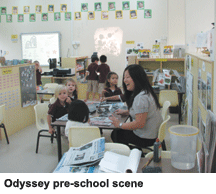 Indeed presumably driven by the same logic, Singapore is currently experiencing a boom in early childhood education with high quality pre-schools mushrooming in all neighbourhoods. This perhaps explains why the hitherto US-based Knowledge Universe Learn-ing Group which owns over 1,800 KinderCare and New Beginnings pre-schools in 39 states across the US, and 132 Busybee brand pre-schools in the UK, took a momentous decision to move its global headquarters to Singapore in 2007.
Indeed presumably driven by the same logic, Singapore is currently experiencing a boom in early childhood education with high quality pre-schools mushrooming in all neighbourhoods. This perhaps explains why the hitherto US-based Knowledge Universe Learn-ing Group which owns over 1,800 KinderCare and New Beginnings pre-schools in 39 states across the US, and 132 Busybee brand pre-schools in the UK, took a momentous decision to move its global headquarters to Singapore in 2007.
“Singapore’s reputation as centre of excellence in education, its development as an educational hub and its trans-parent and open government and economy were decisive factors in our decision to locate our global headquar-ters in Singapore,” says Peter Maslen former chief executive of Pepsico (Eastern Europe) and Starbucks Interna-tional who was appointed chief executive of Knowledge Universe (KU) in 2006.
 Since then KU has acquired a majority shareholding in the city state’s showpiece Canadian International School, promoted several American-style upscale pre-schools under the brand name Odyssey, and has engineered several mergers and acquisitions of early childhood care and education institutions. “Our experience in dealing with all levels of government in Singapore since moving our global headquarters here has been excellent. The responsiveness, professionalism and business-orientation of officials we have transacted with, has been world-class,” affirms Maslen in a ringing endorsement of education development, the Singapore way.
Since then KU has acquired a majority shareholding in the city state’s showpiece Canadian International School, promoted several American-style upscale pre-schools under the brand name Odyssey, and has engineered several mergers and acquisitions of early childhood care and education institutions. “Our experience in dealing with all levels of government in Singapore since moving our global headquarters here has been excellent. The responsiveness, professionalism and business-orientation of officials we have transacted with, has been world-class,” affirms Maslen in a ringing endorsement of education development, the Singapore way.
The standard response of Indian academics to this narrative detailing Singapore’s education development experience and its unlikely transformation into a global centre of academic excell-ence, is that given the relatively huge geography and population of this country, the Singapore blueprint is of limited, if any, value to education planners in India. But while superficially appealing, this argument is flawed because India is a federation of 29 states and comprises 43 major cities of more than 1 million people. Moreover under the Constitution, education is a concurrent subject, with the Centre and states empowered to multiply and upgrade education to improve learning outcomes of children and youth.
If the country’s major cities are given the autonomy to manage and develop education institutions Singapore-style, the island republic’s inspiring socio-economic development story can be replicated in the laggard Indian subcontinent. The lesson to be learned from the Singapore experience is to welcome — rather than grudgingly ‘permit’ — foreign (and private sector) participation in Indian education.